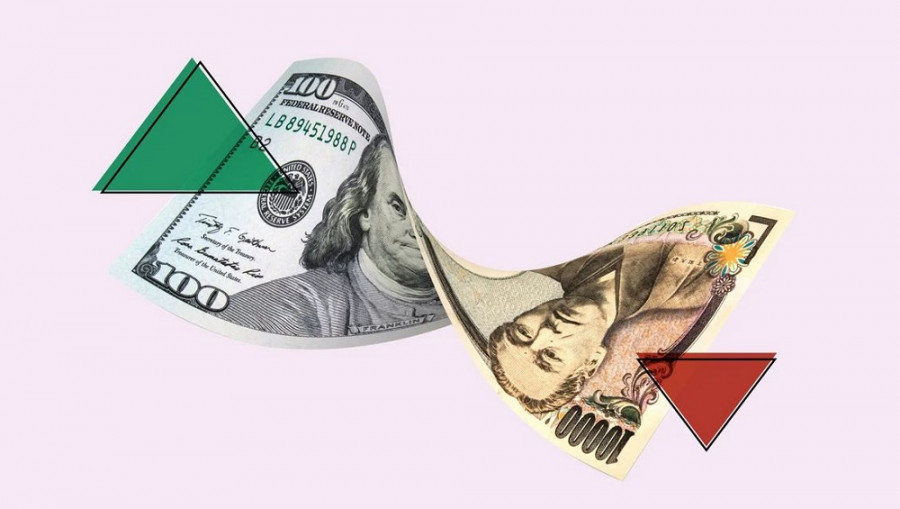
The USD/JPY pair has been testing the 150 level for the second day in a row, despite the risks of currency intervention by the Japanese government. USD/JPY traders have been besieging the key resistance level of 150.00 for over three weeks (since the beginning of October) but have hesitated to conquer new price territories. However, another surge in interest in the U.S. dollar, driven by rising Treasury yields, led buyers of the pair to breach the unofficial "non-aggression pact" and storm the price citadel yesterday.
It's noteworthy that throughout October, the pair repeatedly approached the 150.00 resistance level, but each time, the upward momentum waned when nearing the ceiling of the established range. Buyers took profits and entered into sales, capitalizing on the predictability of the situation. This predictability was not unfounded: in early October, traders set a yearly high, reaching 150.17, after which there was a sharp price drop, nearly 300 pips.
Rumors suggested that Japanese authorities intervened in the situation by conducting a currency intervention. These rumors remained just that: the country's finance minister did not confirm or deny them, stating that his department is not obligated to announce or account for such actions. At the same time, the Finance Minister implied that they were "closely monitoring the situation in the foreign exchange market."

Judging by the subsequent price fluctuations, the hint was understood and accepted by market participants. The pattern worked like clockwork: the pair approached the boundaries of the 150 level, then recoiled and fell to the base of the 149 level. Volatility was low but predictable.
Nevertheless, sooner or later, the balance had to shift one way or the other. As we can see, traders decided to storm the significant price level, disregarding known risks. The dollar is strengthening its position once again despite Jerome Powell's cautious comments and the diminishing hawkish expectations regarding the Federal Reserve's future actions.
Among the main reasons for the greenback's strengthening are the rise in risk aversion and the renewed increase in Treasury yields.
Last week, the yield on the benchmark 10-year U.S. bonds approached the 5% mark for the first time since spring 2007. Then, a correction followed, but to this day, the indicator has started to climb once again (currently at 4.949%).
As is known, the yen is sensitive to the dynamics of Treasury yields, so recent trends have literally pushed the USD/JPY pair into the vicinity of the 150 level—this is the first reason.
The second one is the rise in risk aversion, and here again, the focus is on the Middle East. Amid media speculation that the IDF may forego a ground operation in the Gaza sector, the country's Prime Minister, Benjamin Netanyahu, stated yesterday that he insists on a military mission. According to him, Israel has two goals in the war: "to eliminate HAMAS (by destroying its military and managerial potential) and to do everything possible to return the hostages." Although Netanyahu did not disclose details (including the timing of the operation), he promised it would take place.
Meanwhile, according to American media reports, the White House unofficially expresses concerns that a ground operation could ultimately lead to attacks on U.S. military units stationed in the UAE, Syria, Kuwait, Jordan, and Saudi Arabia. However, despite Washington's "concern," events in the Middle East are unfolding (for now) in an escalation scenario. This fact indirectly supports the safe-haven U.S. dollar.
Thus, the rise in Treasury yields and the increase in geopolitical tension are pushing the USD/JPY pair higher. The question is how far buyers will go and whether they will test the patience of Japanese authorities by staying above the 150.00 target for an extended period. After all, the risk of currency intervention has not been canceled, especially since Japanese authorities already "showed their teeth" at the beginning of October (whether currency intervention was actually conducted at that time or was a kind of bluff doesn't matter).
Therefore, it is advisable to approach long positions on the USD/JPY pair with great caution, at least until the price stabilizes above the 150.50 target (the upper line of the Bollinger Bands indicator on the daily chart). Judging by the fact that today's upward momentum has practically waned, this scenario seems unlikely.
Moreover, it's worth noting that tomorrow, October 27, the U.S. will release a crucial inflation indicator—the core PCE index. As known, this is one of the key inflation indicators tracked by the Federal Reserve. According to the forecasts of most experts, the index is expected to decrease to 3.7% in September, down from 3.9%. If the index comes out even at the forecast level (not to mention the "red zone"), the dollar may come under pressure. In such a case, the likelihood of a Fed rate hike in December will decrease to 10-15% from the current 30% (according to the CME FedWatch Tool).
Summarizing all of the above, it can be concluded that taking a wait-and-see position on the USD/JPY pair at the moment is advisable. With a high degree of probability, the price will return below the 150.00 level in the short term. The events of the past year have shown that the risk of currency intervention is not hypothetical but rather a very real one. The nearest target for a downward movement is the 149.40 support level (the middle line of the Bollinger Bands indicator on the D1 timeframe).